
Review on 🔥 Denso 234-9041 Air Fuel Ratio Sensor: Enhanced Engine Efficiency and Performance by Kevin Grizzle

Perfect fit for Rav4 2007 Base 4WD 2RZ-FE 4 cylinder
I had this problem: On the dashboard: VSC + Check engine + 4WD light on. After installing the product I've ridden over 200 miles in the last few weeks and still have no problems. I don't expect anything either! Here's how I did the $400 job myself: --- I have an OBDII reader that helped me pinpoint the cause. This is an air fuel sensor aka upstream O2 sensor aka bank 1 sensor 1 of the RAV4. It determines the stoichiometric ratio of air and fuel in the combusted mixture (the ratio at which the fuel burns completely, 1:14.7 or something like that). It does not behave like the downstream O2 sensor. The CPU is constantly adjusting the voltage/current, so reading the voltage on the sensor doesn't tell you if the sensor is bad or not. You read it after the processor and that means the OBDII reader is high-end. Reading the resistance won't tell you much either! -- Order with some risk that the electrical plug will not fit. Make sure you can return. Upon receipt, check the correctness of the plug. --- Order an O2 sensor socket (has a slot on the side). Most of them have a 3/8" drive with a 7/8" socket. -- Let the engine idle for 30 seconds - no more. It will warm up a bit. Located on the exhaust manifold that comes directly from the engine. It's on your right when you face the car. There will be a cable going there. -- Wet the base of the existing sensor with Liquid Wrench Penetrating Oil (not for garage doors). lubricate!) Wait 1 hour for the liquid to loosen the rust.-- Disconnect the negative battery terminal and wait at least 30 seconds (sudden airbag deployment). Try removing the existing sensor with a 3/8" and 12" torque wrench. If the thread doesn't loosen to about 40 ft-lbs, soak it again and try again. Do not use force, otherwise the thread may tear ($$$). A light tap on the base will help loosen. -- If it won't come loose, take it to Meineke or where you can install it -- Remove the battery after loosening! This gives you direct access to the sensor. r hole on this side. Install a new sensor using the lube provided, just enough to get a thin coating on the threads. Tighten it by hand first. Make sure you tighten it to 32 ft-lbs. Make sure the cable is routed through the hose clamp so it doesn't touch anything that gets hot. Reinstall the battery. Reconnect all cables and start the engine.-- Check for exhaust gas leaks. You will see smoke-like water vapor coming from the base of the sensor. I installed the torque wrench incorrectly and it had 30 ft lbs on it. And it worked! In the event of a leak, stop the engine immediately. There is a risk of carbon monoxide poisoning. Tighten a little more. Be careful ,. It will be hot! As soon as I re-tightened to 32 ft-lbs the leak stopped. Disconnecting the battery will also clear the trouble code unless you have another problem. Therefore, you will not see an immediate DTC after replacement. --- Drive at least 5 miles with 2 stops - stopping means turning off the engine and removing the key. If you still don't get a DTC, you're probably fine. The same test failed for a month when I decided to replace the sensor. I have attached some photos showing exactly what I received.
- Weight
- Some small things
New products
Comments (0)
Top products in 📊 Car Gauges
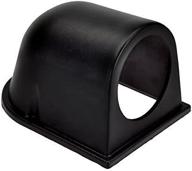
HOTSYSTEM Universal 2Inches 52Mm Single Hole Dash Dashboard Gauge Meter Mount Pod Holder Black Cover For Car Exhaust Gas Oil Water Temperature Temp Voltage Air/Fuel Ratio Turbo Boost Gauge

14 Review
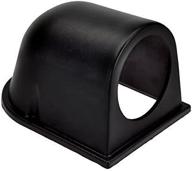
HOTSYSTEM Single Hole Dash Dashboard Gauge Mount Pod For Car Temperature, Voltage, Air/Fuel Ratio, Boost, Exhaust & More - Universal 2 Inches 52Mm Size With Black Cover

11 Review

A/C Dash Button Repair Kit: 5PCS TIHOOD Stickers For Faded Auto Climate Control Decals Replacement With Perfect Adhesive Fit

10 Review
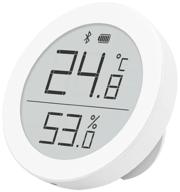
Room temperature and humidity sensor Xiaomi ClearGrass Bluetooth Thermometer white

13 Review
Another interesting products

2Buyshop 2 Pack Car Tissue Holder - PU Leather Napkin Box For Sun Visor & Backseat - Black

28 Review
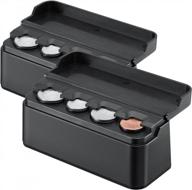
2 Pack JOYTUTUS Coin Holder: Universal Car Change Organizer For Most Trucks Accessories

27 Review

Tsumbay Car Backseat Organizer - PU Leather With Tablet Holder, Foldable Table Tray, And 9 Storage Pockets

33 Review
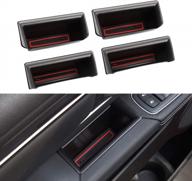
Motrobe Door Side Storage Tray For 2023 2022 2021 2020 2019 Dodge Ram 1500 Crew Cab Driver And Passenger Door Armrest Pocket Insert Organizer Set Of 4

30 Review

